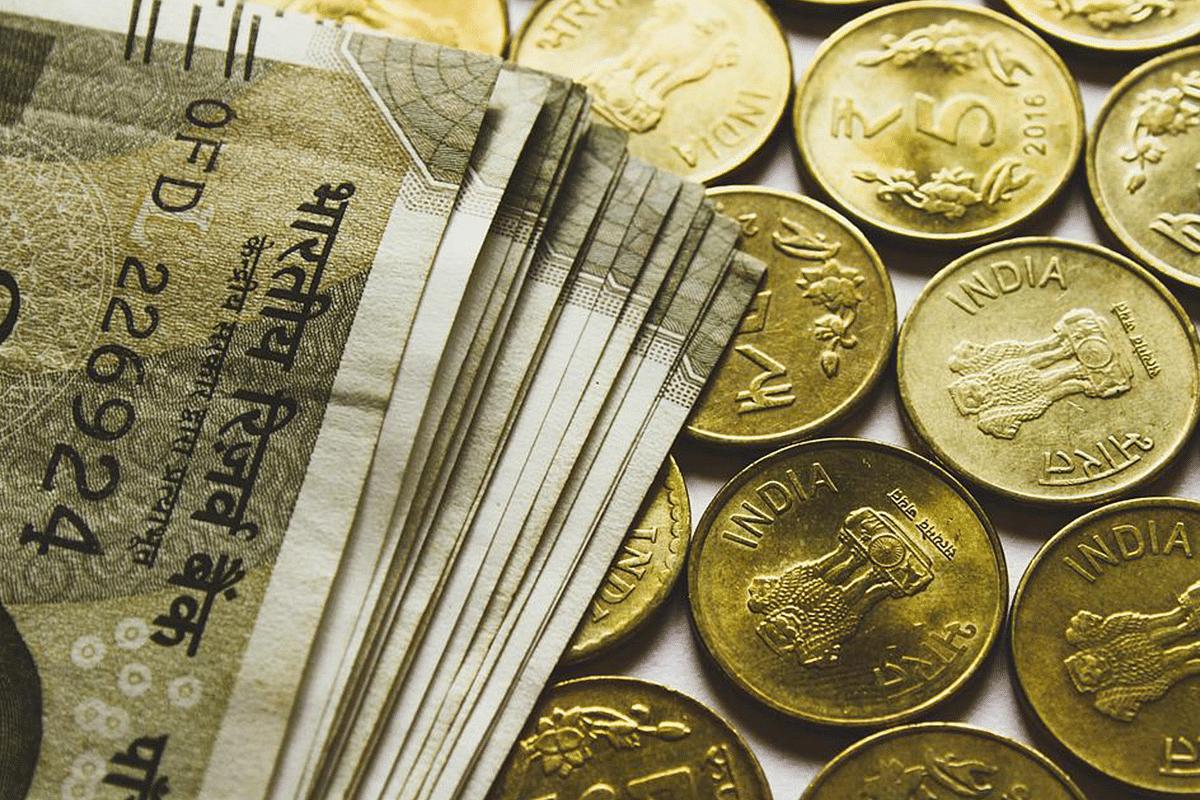Context
Why The Devaluation Of The Indian Rupee Is Not Alarming

Devaluation of Indian currency (Pixabay)
The rupee has hit a record low of 79.11 vs the US dollar. Is it a sign of worry for the Indian economy?
Why the fall: Rising US interest rates cause higher financial capital outflows from India, which lead to a fall in the value of the rupee.
The US economy today is suffering from startling levels of both monetary and price inflation. Hence, the Federal Reserve increased its federal fund rate in February 2022 for the first time since 2018 by 0.25 basis points (from 0.08 to 0.33 per cent).
When Fed increases its interest rate, dollar-based bonds at the higher interest rates become a safe haven for higher returns to all foreign institutional investors (including those in India) like hedge funds, mutual funds, pension funds, insurance bonds, high-value debentures, and investment banks from India, which means capital outflows.
The increased demand for dollars makes Indian investors sell rupees in the international currency markets, which lowers the value of the Indian currency.
Indian economy's current situation: Between 2020 and 2021, India experienced a significant number of job losses and a decline of regular household income during the Covid lockdown period.
GDP growth fell continuously for eight quarters. GDP growth was 8.2 per cent in March 2018 and had fallen to 3.1 per cent in March 2020.
Later, as the impact of Covid cases fell and lockdowns eased, the Indian economy showed a resilient recovery where its real GDP grew by 8.7 per cent for FY22.
What led recovery: Much of this recovery was due to the entrepreneurial efforts of various MSMEs.
There are around 6.3 crore MSMEs in India which contribute approximately 29 per cent of the country’s GDP and are responsible for around 48 per cent of the country’s total exports.
They are also accountable for one-third of India’s manufacturing output through their national and international trade.
How this is related to devaluation: When a country’s currency is devalued, its goods are cheaper to foreign buyers, resulting in higher exports.
India’s merchandise exports soared to a record high of $417.81 billion during FY 2021-22, surpassing the government’s target of $400 billion.
The decreasing value of the Indian rupee also creates favorable conditions for domestic demand growth, as imports become more expensive than domestic produce.
This correlates with the reduction in the value of the rupee from an average of 69 rupees per dollar in 2019 to 73.5 in 2021, and 75 for the first 3 months of calendar 2022.
What should India do now: While a falling rupee against the dollar is not automatically harmful to the Indian economy, raising interest rates in order to combat capital outflow could seriously damage the economy.
When interest rates increase, the cost of borrowing becomes significant which reduces margin for MSMEs. Also, the general scarcity of money in the market due to the tight monetary policies will cause producers to lower their output.
A monetary strategy that aims to restore the international value of the rupee primarily through interest rate measures runs the risk of starting a recession if unemployment rises, and increased prices kill consumer demand.
Use foreign reserves: Foreign reserves have been accumulating since the Covid period when India’s exports exceeded imports.
India’s foreign exchange reserves were of the order of $601.1 billion as of 3 June 2022, and are further supplemented by a healthy level of net forward assets held at the RBI.
The RBI, working in tandem with the Indian government, could buy rupees on the market with its massive foreign reserve, and stabilise the currency without hurting the economy with interest rate increases.
Support Swarajya's 50 Ground Reports Project & Sponsor A Story
Every general election Swarajya does a 50 ground reports project.
Aimed only at serious readers and those who appreciate the nuances of political undercurrents, the project provides a sense of India's electoral landscape. As you know, these reports are produced after considerable investment of travel, time and effort on the ground.
This time too we've kicked off the project in style and have covered over 30 constituencies already. If you're someone who appreciates such work and have enjoyed our coverage please consider sponsoring a ground report for just Rs 2999 to Rs 19,999 - it goes a long way in helping us produce more quality reportage.
You can also back this project by becoming a subscriber for as little as Rs 999 - so do click on this links and choose a plan that suits you and back us.
Click below to contribute.
Latest